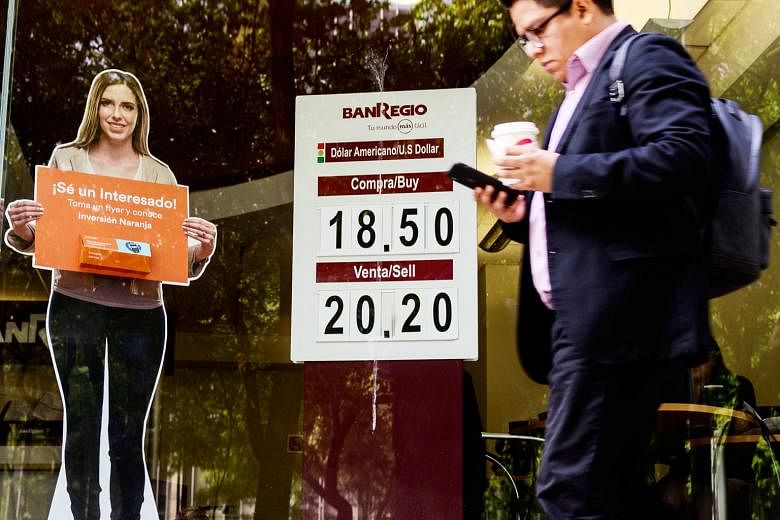NEW YORK • The buzz around possible US currency intervention is growing louder as Goldman Sachs has weighed in on an idea making the rounds on Wall Street.
US President Donald Trump's repeated complaints about other countries' foreign-exchange practices have "brought US currency policy back into the forefront for investors", strategist Michael Cahill wrote in a note on Thursday.
Against a fraught trade backdrop that has created the perception that "anything is possible", the risk of the United States acting to cheapen its dollar is climbing, he said.
The US last intervened in forex markets in 2011 when it stepped in along with international peers after the yen soared in the wake of that year's devastating earthquake in Japan. That effort buoyed the dollar. However, more analysts in recent weeks have been contemplating the wild-card notion that the US could forcibly weaken the dollar. The US has not taken that step since 2000.
"Direct forex intervention by the US is a low but rising risk," Mr Cahill wrote. "While this would cut against the norms of recent decades, developed-market central banks have recently used their balance sheets more actively, and forex intervention is akin to unconventional monetary policy."
Goldman joins analysts from banks such as ING and Citigroup in writing on the prospect. Intervention has become a hot topic since Mr Trump tweeted last week that Europe and China are playing a "big currency manipulation game". He called on the US to "match, or continue being the dummies".
Buoyed in part by a round of Federal Reserve rate increases, the dollar has strengthened. A Fed trade-weighted measure of the greenback is not far below the strongest since 2002, underscoring the competitive headwinds US exports face overseas. Mr Trump has grown concerned that the currency's strength will undermine his economic agenda, which has fed into his criticism of the US central bank.
Still, in a tweet on Thursday, where he criticised Facebook's plan for a digital currency, he came out in support of the greenback, calling it "by far the most dominant currency anywhere in the world".
There may be some wrinkles to consider with intervention, Mr Cahill wrote. While the Treasury and Fed have typically contributed equal amounts in past episodes, if the Fed chooses not to participate it would "substantially limit" the potential scale, he said. The Treasury's Exchange Stabilisation Fund holds roughly US$22 billion (S$30 billion) in greenbacks and around US$50 billion in special drawing rights that it could convert, in addition to euros and yen.
Even if the Treasury acted on its own, "we would expect that the symbolic importance of this step would still have a significant market-moving effect", he wrote.
That is not to say it will be easy to leave a lasting impact on a market that trades about US$5 trillion daily. In past interventions, various nations' central banks typically acted together, strengthening the signal to investors. But this time, the US may find itself flying solo, especially if its efforts would work to the detriment of American allies as trade tensions simmer.
"The international community would be unlikely at this stage to coordinate with the US to weaken the dollar," Mr Cahill said.
There is also the question of whether it would make sense for the US to boost holdings of the low-yielding currencies it would wind up buying should it sell dollars.
US intervention would increase portfolios of euro, yen and especially Chinese yuan, wrote senior macro strategist Sebastien Galyat Nordea Investment Funds. The US' reserves in euro and yen "in a base case scenario earn nothing".
The market has yet to display much concern about the prospect of US intervention: Global currency volatility is at a five-year low. However, the risk of Mr Trump moving to achieve a weaker greenback would increase if the European Central Bank pursues further monetary stimulus, according to analysts at ING and Societe Generale.
BLOOMBERG

